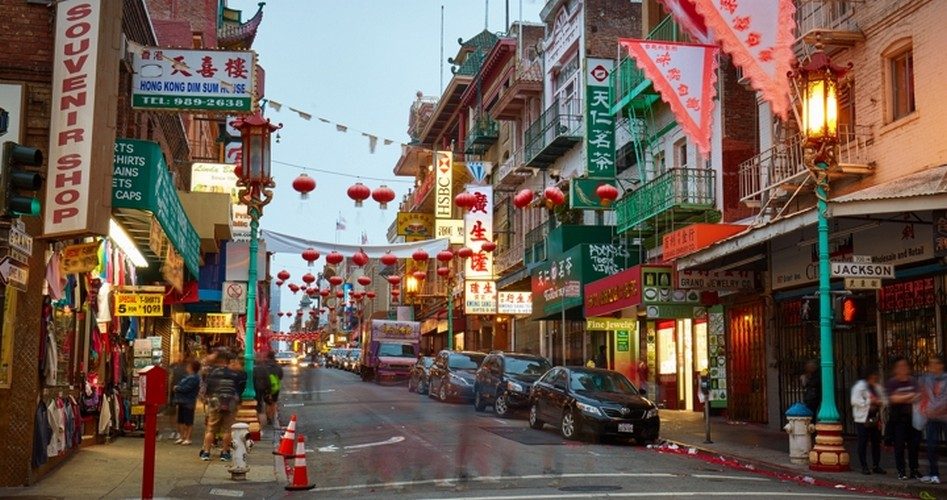
When Americans think of immigration, they naturally think of immigrants from Mexico, or perhaps from Latin America generally, but there are now more immigrants coming from Communist China than from any country south of the border.
It is understandable that immigration in the past several years has been more associated with individuals entering the United States from Mexico. After all, as recently as 2006, immigrants from that country were more numerous than those who came to America from China, India, and Canada — combined.
Mexico was passed as the source of American immigration by India in 2010. The wave of immigration from these two Asian nations — India and China — has altered the immigration pattern not only ethnically, but economically. Even California, which has been flooded with both legal and illegal aliens from Latin America in the past several years — changing that state’s culture, economy, and politics — now has an annual influx of migrants from China and India greater than that from Mexico.
Overall, well over one million legal immigrants from India and China — mostly into high-tech jobs — have largely taken over Silicon Valley. Foreign-born workers now outnumber native-born American workers in that industry. Before this shifting of immigration patterns, migrant workers from Mexico and other places in Latin America were depressing the wages of blue-collar workers who were native-born. Now, it is increasingly difficult for a native-born worker to get a high-dollar job in America’s technology sector.
Before 1965, the bulk of American immigrants were from Europe, but with the passage of 1965 Immigration Act, the make-up of American immigration has changed, both in terms of sheer numbers of immigrants and in the ethnic background of those immigrants. While many of these immigrants have been hard-working, this rising tide of immigration has also increased the expense of the social-services sector, paid for by American taxpayers.
In 1965, the Hart-Celler Act radically changed American immigration laws, abolishing the quota system (which limited the number of immigrants from each country, based on historic immigration patterns). Instead, emphasis was placed on giving preference to family relationships. Thus, once some immigrants from places such as China and India made it to the United States, they became part of what is commonly referred to as “chain migration.”
This radical change in immigration policy has dramatically helped the Democratic Party at the ballot box. In 1968, Democratic consultant Patrick Reddy praised the Kennedys for this change. “The 1965 Immigration Reform Act promoted by President Kennedy, drafted by Attorney General Robert Kennedy, and pushed through the Senate by Ted Kennedy has resulted in a wave of immigration from the Third World that should shift the nation in a more liberal direction within a generation. It will go down as the Kennedy family’s greatest gift to the Democratic Party.”
From 2008 to 2018, the United States has received more than 10 million legal immigrants, larger than the population of New York City and of several states.
With the surge of immigration from China — a totalitarian Communist dictatorship and a determined enemy of the United States — one must also be concerned about the likelihood that the Chicoms have included active agents of their government mixed in with economic migrants who are simply making it more difficult for native-born Americans to obtain high-paying jobs in the technology sector.
Red Chinese efforts to subvert the United States are not new, of course, and the likelihood that spies are sprinkled through the American high-tech sector is simply the latest manifestation of the openly expressed desire of that nation’s Communist rulers to dominate the world.
Before the political effects of the 1965 immigration law were complete, Democrats managed to win only one of six presidential elections until 1992. Democrat Bill Clinton’s win in 1992 was greatly helped by the presence of an independent candidate, Ross Perot, who took most of his votes from the Republican candidate. Because of this, it was uncertain that Clinton could be reelected in 1996, and without Perot on the ballot (Perot wound up running again, and although he did not do nearly as well as he did in 1992, he did contribute to Clinton failing to get a majority of the popular vote for a second time), he was fated to lose.
Clinton needed lots of campaign cash, and violated several campaign finance laws to get that cash. Chinese businessman Johnny Chung (with, of course, strong ties to the Red Chinese government) explained to the New York Times his giving $360,000 to the Democratic National Committee: “I see the White House as like a subway. You have to put in coins to open the gates.”
China’s emergence as a global superpower in the last generation is largely a result of support from the technology it has pilfered from the United States. The architect of the modernization of the Chinese military was General Chi Hoatian, the man who ordered the tanks to roll over anti-communist demonstrators in Tiananmen Square, yet President Clinton received Hoatian with honors in December 1996.
It should be stressed that if the Chinese Communist government did not think the export of these high-tech emigrants to the United States would help their scheme to advance Chinese communism, the Chinese would not be coming to the United States in such large numbers. Think about that.
Image: xavierarnau via iStock / Getty Images Plus
Steve Byas is a university instructor in government and history and the author of History’s Greatest Libels. He can be contacted at [email protected]



